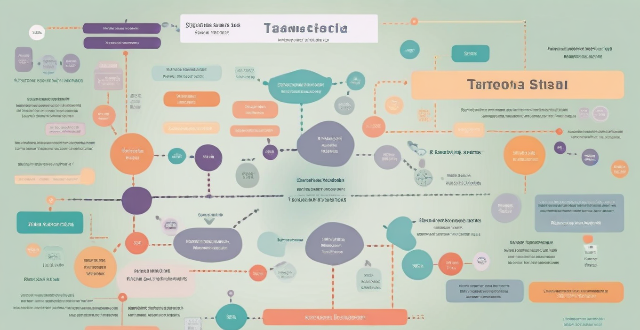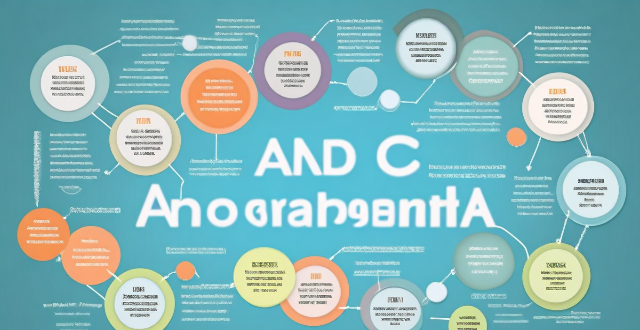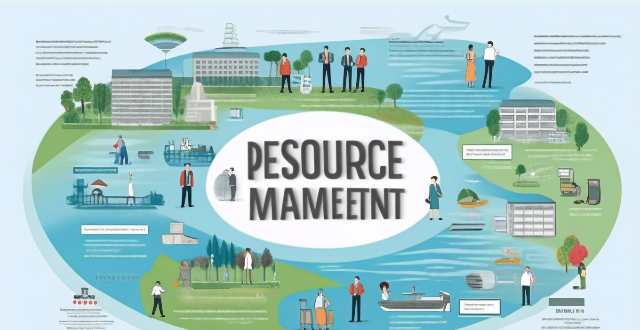Resource School

How can data analytics be used to inform school policy decisions and resource allocation ?
Using data analytics can greatly inform school policy decisions and resource allocation. By analyzing data, schools can identify areas for improvement, personalize learning experiences, evaluate teacher performance, allocate resources effectively, and enhance student support services. This approach leads to improved student outcomes, teaching quality, and resource use.

How do I evaluate the cultural diversity and inclusion efforts of a school ?
Evaluating the cultural diversity and inclusion efforts of a school involves examining various aspects such as administrative policies, curriculum, student experience, community engagement, and feedback mechanisms. Key factors to consider include the presence of a clear diversity statement in policies, fair hiring and promotion practices, multicultural curriculum, teacher training, diverse student organizations, support services for diverse students, collaboration with local communities, family involvement programs, regular surveys and feedback mechanisms, and continuous improvement plans based on feedback. By assessing these elements, one can gain insight into the effectiveness of a school's efforts to promote cultural diversity and inclusion.

What questions should I ask during a school visit or open house ?
Visiting a school or attending an open house is a valuable opportunity to gather information about the educational environment and culture of the institution. To make the most of your visit, it's important to ask thoughtful questions that will help you understand the school's philosophy, curriculum, and community. Key questions to consider include those related to school culture and philosophy, academics and curriculum, extracurricular activities and facilities, teachers and staff, student support and services, parental involvement and communication, safety and health, and closing questions to clarify next steps. By asking these questions, you can gain a comprehensive understanding of the school and be better equipped to make an informed decision about your child's education.

What is the impact of school size on the overall learning experience ?
School size affects academic performance, social interactions and extracurricular activities. Small schools offer personalized attention and strong teacher-student relationships but may lack diversity and extracurricular options. Large schools provide diverse course offerings and a wide range of extracurricular activities but may have limited personalized attention and increased competition. Choosing the right school size depends on individual needs and preferences for the best learning experience.

How will a lunar base address issues related to Earth's overpopulation or resource depletion ?
A lunar base could address Earth's overpopulation and resource depletion by reducing population pressure, enabling sustainable resource use, advancing science and technology, and promoting international cooperation.

How does resource-efficient utilization contribute to sustainable development ?
Resource-efficient utilization is key to sustainable development, conserving resources, reducing waste, and promoting economic growth. It helps mitigate environmental impact, provides economic benefits, and enhances social well-being. As we face global challenges like climate change and resource scarcity, adopting resource-efficient practices is crucial for a sustainable future.

How can education and awareness programs help in promoting resource-efficient utilization ?
Education and awareness programs are crucial for promoting resource-efficient utilization. These programs can help individuals make informed decisions about their consumption habits and encourage them to adopt more sustainable practices. To maximize the impact of education and awareness programs, it is important to target different audiences, use multiple channels for dissemination, provide practical tips and strategies, and foster a sense of community and collective action towards sustainability goals. By doing so, these programs can contribute significantly to resource efficiency and promote sustainable development.

How does a circular economy contribute to waste reduction and resource conservation ?
The circular economy model promotes waste reduction and resource conservation by advocating for the reuse and recycling of materials, reducing raw material extraction, extending product lifecycles, treating waste as a resource, encouraging the sharing economy and digital services, improving resource efficiency, promoting biodegradable and renewable resources, raising consumer awareness, and supporting regulatory policies. This approach challenges traditional linear economic models and offers a sustainable solution to address environmental issues related to waste and resource depletion.

What are the benefits of implementing resource-efficient utilization in businesses ?
The benefits of implementing resource-efficient utilization in businesses include cost savings, environmental sustainability, competitive advantage, and risk mitigation. By reducing waste and improving resource management, companies can lower their operating expenses and increase profitability. Additionally, conserving resources and reducing waste can minimize a business's impact on the environment and contribute to a more sustainable future. Implementing these practices can also provide a competitive advantage by demonstrating a commitment to sustainability and social responsibility, attracting customers, employees, and investors who value these principles. Finally, resource-efficient utilization can help businesses mitigate risks associated with resource scarcity, price volatility, and regulatory changes, ensuring stable operations and a reliable supply chain.

What role does location play in selecting the right school ?
The role of location in selecting the right school is crucial as it affects various aspects such as accessibility, safety, community environment, and extracurricular opportunities. Accessibility is a primary consideration, with parents preferring schools that are easily accessible from their homes or workplaces. Safety is another important factor, with families tending to prefer schools located in areas with lower crime rates and good pedestrian safety measures. The community environment surrounding a school can significantly impact the overall experience of students and families, with local amenities and cultural diversity playing a role. Finally, the location of a school can determine the availability and variety of extracurricular activities available to students. By carefully evaluating these factors, families can choose a school that meets their academic needs and provides a supportive and enriching environment for their children's growth and development.

How can we measure the effectiveness of resource-efficient utilization initiatives ?
Measuring the effectiveness of resource-efficient utilization initiatives is crucial for organizations and governments aiming to reduce waste, save costs, and minimize environmental impact. This process involves evaluating the outcomes of various initiatives designed to optimize resource use and comparing them against predefined goals or benchmarks. Here's a detailed approach to measure the effectiveness of such initiatives: 1. Define Key Performance Indicators (KPIs): Identify relevant KPIs such as resource consumption rates, cost savings, waste reduction, productivity metrics, and environmental impact. 2. Establish Baseline Data: Gather historical information on resource consumption, costs, waste levels, and productivity prior to the implementation of the initiatives. Note any external factors that might affect the baseline data. 3. Implement Monitoring Systems: Set up data collection methods such as automated tracking using technology like smart meters or IoT devices, regular audits, and employee feedback. 4. Analyze Results and Compare to Baseline: Evaluate performance against KPIs by analyzing collected data and identifying trends and anomalies. Compare the post-implementation data with the baseline to gauge improvements or setbacks. Create charts and graphs to visually depict the changes over time. 5. Report Findings and Recommendations: Compile detailed reports outlining the findings from the analysis phase. Based on the results, suggest adjustments to current practices or propose new initiatives. Share the reports with relevant stakeholders, including management, employees, and regulatory bodies. 6. Continuous Improvement: Iterate and optimize initiatives through a feedback loop mechanism for continuous feedback from all involved parties. Revise strategies based on performance data and stakeholder input. Integrate lessons learned into long-term sustainability plans. In conclusion, measuring the effectiveness of resource-efficient utilization initiatives requires a structured approach that includes defining clear KPIs, establishing baseline data, implementing monitoring systems, analyzing results, reporting findings, and committing to continuous improvement. By following these steps, organizations can ensure that their efforts to utilize resources efficiently are not only successful but also measurable and sustainable over time.

How do I choose the right online learning resource for my needs ?
When choosing an online learning resource, consider your learningWhen choosing an online learning resource, consider your learning quality, usability, cost consider your learning goals, style, content quality, usability, cost, and interactive features. Look for resources that align with your objectives, cater to your preferred method of learning, provide accurate and up-to-date information, are user-friendly and accessible, offer good value for money, and have interactive features and community support.

How to start a new extracurricular club at school ?
Starting a new extracurricular club at school can be an exciting and rewarding experience. It allows you to pursue your interests, meet new people, and develop leadership skills. Here are the steps to follow: 1. Identify your interests and goals for starting the club. What do you want to achieve? Is it to learn a new skill, share your passion with others, or make a difference in your community? Having a clear vision will help you stay motivated and focused throughout the process. 2. Research existing clubs at your school to see if there are any similar groups already in place. This will help you determine if there is a demand for your proposed club and what unique aspects you can bring to it. 3. Gather support from other students who share your interests and goals. Talk to them about your idea and ask if they would be interested in joining. You can also seek advice from teachers or staff members who may have experience starting clubs. 4. Create a proposal that outlines the purpose, goals, and structure of your club. Include details such as meeting times, membership requirements, and potential activities. Make sure your proposal is well-organized and clearly communicates your vision. 5. Submit your proposal to the appropriate person or committee at your school. This may vary depending on your school's policies and procedures. Be prepared to answer questions and provide additional information if needed. 6. Once your proposal is approved, start recruiting members by spreading the word through posters, social media, and word of mouth. Host an interest meeting or event to introduce potential members to your club and its activities. 7. Plan activities and events that align with your club's goals and interests. This could include workshops, guest speakers, service projects, or competitions. Make sure to involve your members in planning and decision-making processes. 8. Promote your club through various channels such as school announcements, newsletters, and social media platforms. Attend school events and showcase what your club does to attract more members and raise awareness. 9. Regularly evaluate your club's progress and adjust accordingly. Solicit feedback from members and stakeholders to improve and ensure that your club continues to meet its goals and objectives.

What are the key factors to consider when choosing a school ?
Choosing a school involves evaluating academic programs, teacher qualificationChoosing a school involves evaluating academic programs, teacher qualificationcurricular activities, location, By taking these factors into account, you can select a school that aligns with your interests, goals, and budget.

What are the challenges of implementing home teaching strategies for high school students ?
Implementing home teaching strategies for high school students can be challenging due to lack of resources, time constraints, difficulty in maintaining discipline, limited expertise in subject matter, and difficulty in assessing student performance. However, with careful planning, dedication, and support from educators and other professionals, these challenges can be overcome to provide high-quality education for high school students at home.

How do school sports programs influence the physical activity levels of teenagers ?
School sports programs have a significant impact on the physical activity levels of teenagers. They encourage regular exercise and help develop essential life skills such as teamwork, communication, and leadership. These skills are valuable in personal and professional settings. School sports programs also play a vital role in building healthy habits among teenagers by promoting proper nutrition, rest, and recovery. Finally, school sports programs provide opportunities for personal growth and development through challenging physical and mental activities. Overall, school sports programs help teenagers lead active and fulfilling lives both inside and outside of the classroom.

How important is student-teacher ratio in school selection ?
The student-teacher ratio is a crucial factor in school selection, impacting academic performance, personal attention, and classroom management. A lower ratio allows for individual attention, customized learning, and timely feedback, promoting better understanding and improved academic performance. It also creates opportunities for mentorship, emotional support, and social development, contributing to a positive learning environment. Effective classroom management is more feasible with a lower ratio, leading to reduced discipline issues, increased participation, and flexible teaching strategies. Prioritizing schools with favorable ratios can contribute to a successful educational journey.

How can I gauge the level of parental involvement and community support at a school ?
Gauging the level of parental involvement and community support at a school is crucial for parents when choosing an educational institution for their child. This can significantly impact a student's academic performance and overall development. To gauge these factors, parents can observe school events, talk to other parents, and research the school's reputation. When observing school events, parents should attend open houses, sports games/concerts, and volunteer opportunities to assess the turnout and engagement of parents during these events. A high turnout and active participation suggest strong parental involvement and community support. Parents can also connect with other parents through social media groups, PTA meetings, school drop-off/pick-up times, and school events to ask about their experiences regarding parental involvement and community support at the school. Asking about their level of involvement, supportiveness of the school, communication channels, and impact on student performance can provide valuable insights. Researching the school's reputation online through reviews, rankings, news articles, social media, forums, and message boards can also help gauge parental involvement and community support. Analyzing historical data such as enrollment trends, fundraising results, alumni success rates, and school surveys/feedback can further indicate the level of these factors over time. In conclusion, gauging the level of parental involvement and community support at a school involves attending school events, talking to other parents, and researching the school's reputation. By doing so, parents can make informed decisions about choosing the right school for their child that fosters a supportive and engaging environment conducive to academic success and overall development.

What strategies can be used to promote parent-teacher collaboration in schools ?
Promoting parent-teacher collaboration in schools is crucial for student success and well-being. Strategies include open communication, involvement opportunities, parent education, shared responsibility, technology integration, and celebrating diversity. Regular updates, volunteer programs, workshops, home-school agreements, online portals, and multicultural events are among the tactics that can foster a strong partnership between parents and teachers.

What are the key factors to consider when choosing an international school or program ?
When selecting an international school or program, consider factorsWhen selecting an international school or program, consider factorsation and reputation, curriculum and extracurricular activities and opportunities for internships or study abroad, cultural diversity and inclusivity, location and facilities, and cost and financial aid options. These considerations can help ensure that the chosen institution aligns with your academic goals and personal preferences, fostering both academic success and personal growth.

What are the legal and policy frameworks for water resource management at the national and international levels ?
Water resource management is a critical issue that affects the sustainability of ecosystems, the economy, and human well-being. To address this challenge, various legal and policy frameworks have been established at both national and international levels. At the national level, water resource management is governed by a combination of laws, regulations, and policies aimed at ensuring equitable access to water resources, protecting the environment, and promoting sustainable development. International legal and policy frameworks play a crucial role in addressing transboundary water issues and promoting global cooperation on water resource management. Effective water resource management requires a comprehensive approach that encompasses both national and international legal and policy frameworks.

What role do parents play in ensuring their child's special education needs are met at school ?
Parents play a crucial role in ensuring their child's special education needs are met at school. They can do this by understanding their child's needs, collaborating with school personnel, and providing support at home. Advocating for your child involves working with professionals to assess their needs, keeping detailed records, and regularly communicating with teachers and other professionals. Collaborating with school personnel means attending IEP meetings, maintaining open lines of communication, and viewing yourself as a partner with the school. Providing support at home involves ensuring consistency between home and school environments, helping with homework, and offering emotional support. Building positive relationships with school personnel is essential, as is addressing challenges through problem-solving and persistence. By being proactive, informed, and engaged, parents can play a significant role in ensuring their child's special education needs are met at school.

How does climate change influence resource competition and its impact on international relations ?
Climate change is significantly impacting resource competition and international relations by altering the availability and distribution of natural resources like water, food, and energy. This results in increased competition among nations for these resources, affecting economic systems, political structures, and global stability. Water scarcity due to changing precipitation patterns is causing conflicts, especially in regions sharing rivers or aquifers. Changes in temperature and rainfall patterns are affecting food production, leading to increased import dependency and potential conflicts over limited resources. Energy resource competition is shifting towards renewables due to climate change impacts on fossil fuels. Countries are engaging in mitigation and adaptation efforts through international agreements, technology transfer, and disaster risk reduction. While climate change presents challenges, it also offers opportunities for global cooperation in addressing this common threat.

How can we promote public awareness and participation in water resource management ?
Water resource management is crucial for communities worldwide, and promoting public awareness and involvement is key. Strategies include education campaigns, public participation initiatives, incentives, and collaboration with local government and businesses. These efforts aim to increase knowledge, encourage active participation, and foster conservation and sustainability.

How can governments promote resource-efficient utilization among their citizens ?
Governments can promote resource-efficient utilization among citizens through legislation, education, incentives, research, public sector leadership, and collaboration with stakeholders.

How can we balance economic development and water resource protection ?
Water resources are crucial for economic development but must be protected to ensure sustainability. Strategies for balancing these goals include prioritizing sustainable practices, implementing regulatory measures, fostering collaboration and partnerships, investing in infrastructure and technology, and educating and creating awareness. By adopting these approaches, we can achieve a balance between economic growth and water conservation, ensuring long-term sustainability for all.

What role do schools play in promoting child safety education ?
Schools play a crucial role in promoting child safety education. They create awareness through classroom instruction, assemblies, and workshops on topics like internet safety and emergency preparedness. Practical application is emphasized through drills, simulations, and field trips with safety guidelines. Physical safety measures include secure campuses and safe playgrounds. Emotional and mental health support is provided through counseling services and peer support programs. Family involvement is encouraged through parent-teacher conferences and information sharing. Community partnerships with local law enforcement and emergency service workshops enhance safety education. Safety topics are integrated into the curriculum through cross-curricular teaching and service learning projects. Clear policies and consistent procedures ensure everyone knows how to respond in emergencies. Resource allocation prioritizes safety equipment, training, and updating facilities. Overall, schools collaborate with families and community partners to effectively prepare children for potential risks and protect themselves in various situations.

How do I compare different schools based on their academic performance ?
When comparing different schools based on their academic performance, consider factors such as school rankings, standardized test scores, graduation rates and college acceptance rates, availability of advanced placement (AP) courses and dual enrollment options, extracurricular activities and clubs, student-teacher ratio and class size, and reviews from current and former students, parents, and educators.

What are the benefits of implementing circular economy policies ?
Implementing circular economy policies brings environmental, economic, and social benefits. Environmentally, it reduces resource consumption, lowers greenhouse gas emissions, and improves waste management. Economically, it creates jobs, saves costs, and drives innovation. Socially, it ensures resource security, improves public health, and empowers consumers. Overall, adopting these policies shifts towards a sustainable system that prioritizes long-term planetary health.